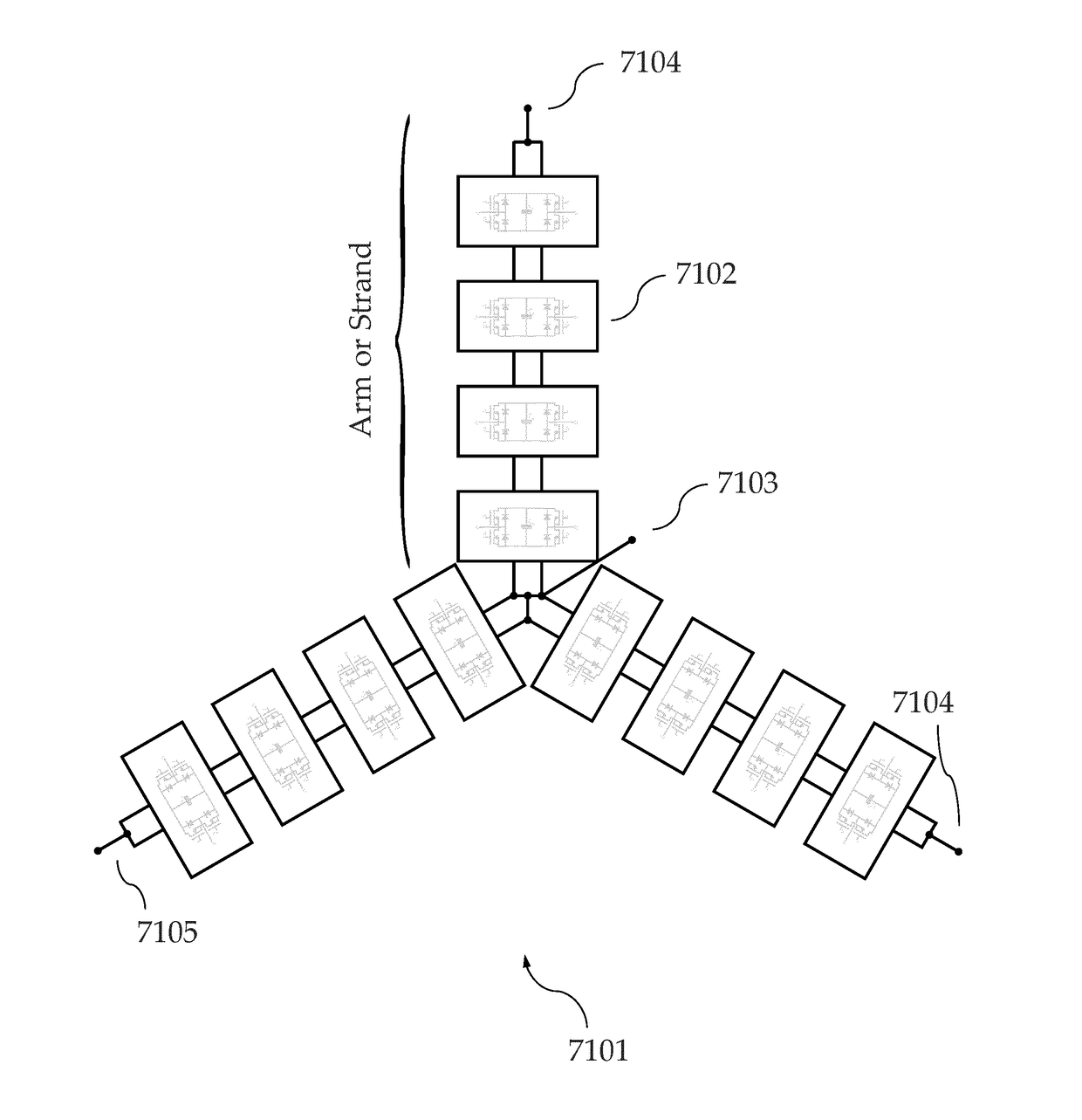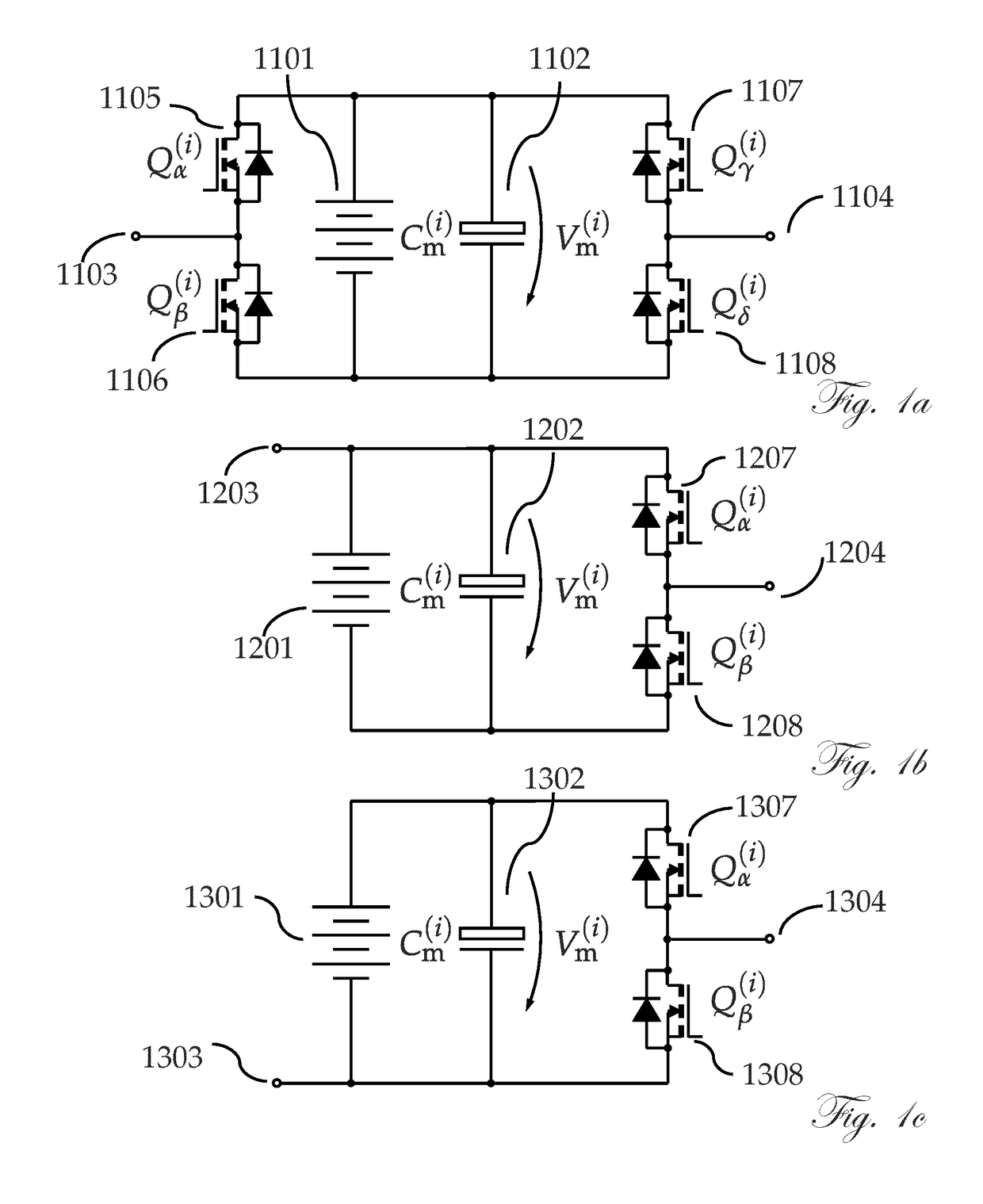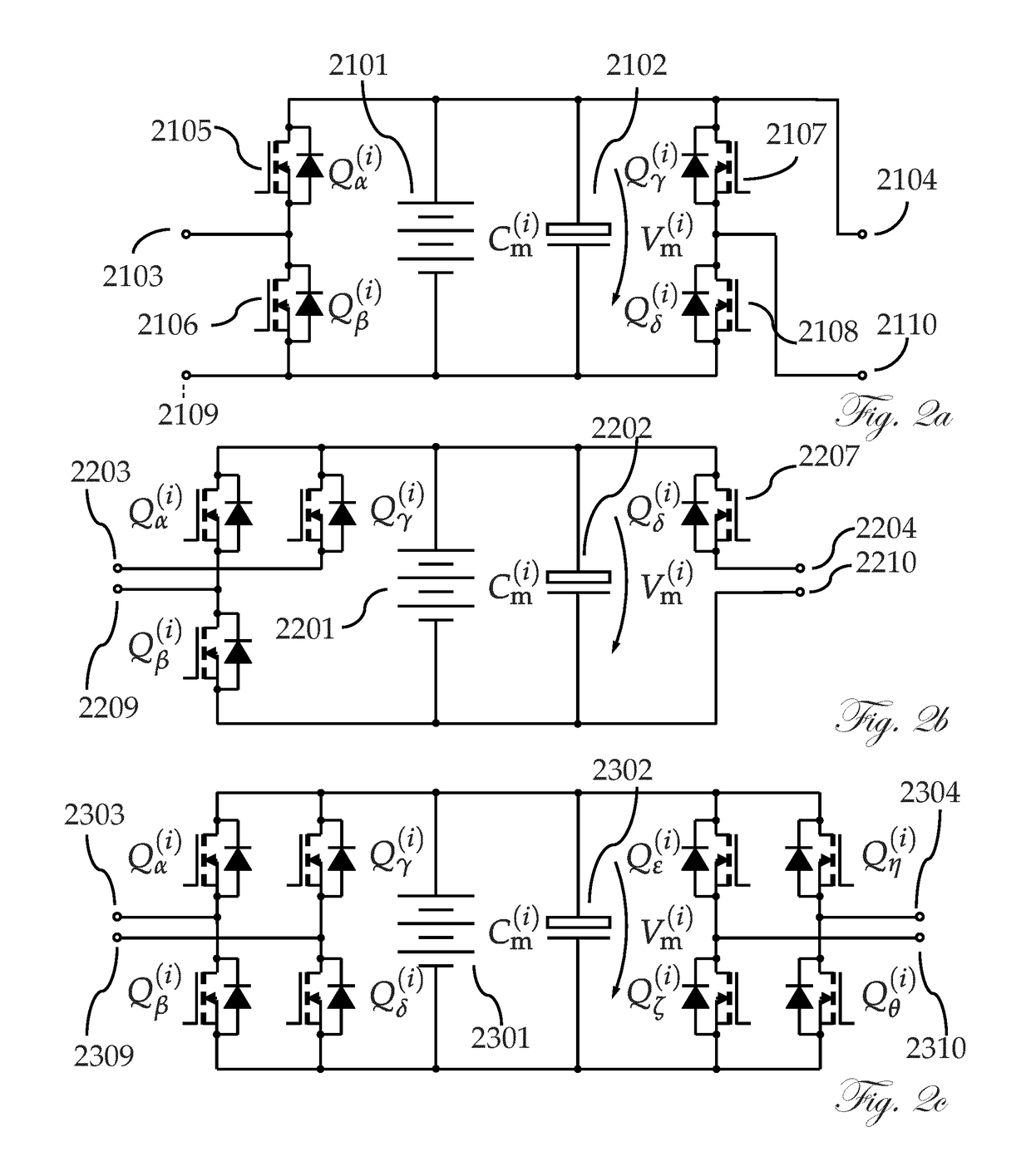Apparatus and method for an electric power supply
a technology of electric power supply and apparatus, applied in the direction of battery overheat protection, safety/protection circuit, battery/fuel cell control arrangement, etc., can solve the problems of not being compatible with the ac power the machine requires, assumed to be a major safety risk, and not being able to operate directly with the electricity provided by the available one or more energy source elements and/or one or more electrical storage elements, etc., to achieve the effect of reducing cost, space and losses, improving driv
- Summary
- Abstract
- Description
- Claims
- Application Information
AI Technical Summary
Benefits of technology
Problems solved by technology
Method used
Image
Examples
Embodiment Construction
[0036]The invention integrates the traction battery and various power electronic converters for electric vehicles into a single, multi-function unit. Specifically, the invention can integrate the battery, traction boost converter and inverter, drive control, auxiliary power supply bus converter, and high-power charger for both AC and DC power. In addition, further functionalities that are conventionally in separate units can be incorporated into the system and efficiently performed by the same electronics, such as battery management and thermal management. The solution provides unique advantages; these include, among others, higher efficiency, lower cost, and increased reliability.
[0037]A battery and / or a battery subportion according to the present invention refers to all kinds of electrical sources and / or storage elements, including but not limited to galvanic cells, electrochemical primary cells, electrochemical secondary cells, capacitors of various kinds, including double-layer ...
PUM
 Login to View More
Login to View More Abstract
Description
Claims
Application Information
 Login to View More
Login to View More - R&D
- Intellectual Property
- Life Sciences
- Materials
- Tech Scout
- Unparalleled Data Quality
- Higher Quality Content
- 60% Fewer Hallucinations
Browse by: Latest US Patents, China's latest patents, Technical Efficacy Thesaurus, Application Domain, Technology Topic, Popular Technical Reports.
© 2025 PatSnap. All rights reserved.Legal|Privacy policy|Modern Slavery Act Transparency Statement|Sitemap|About US| Contact US: help@patsnap.com



